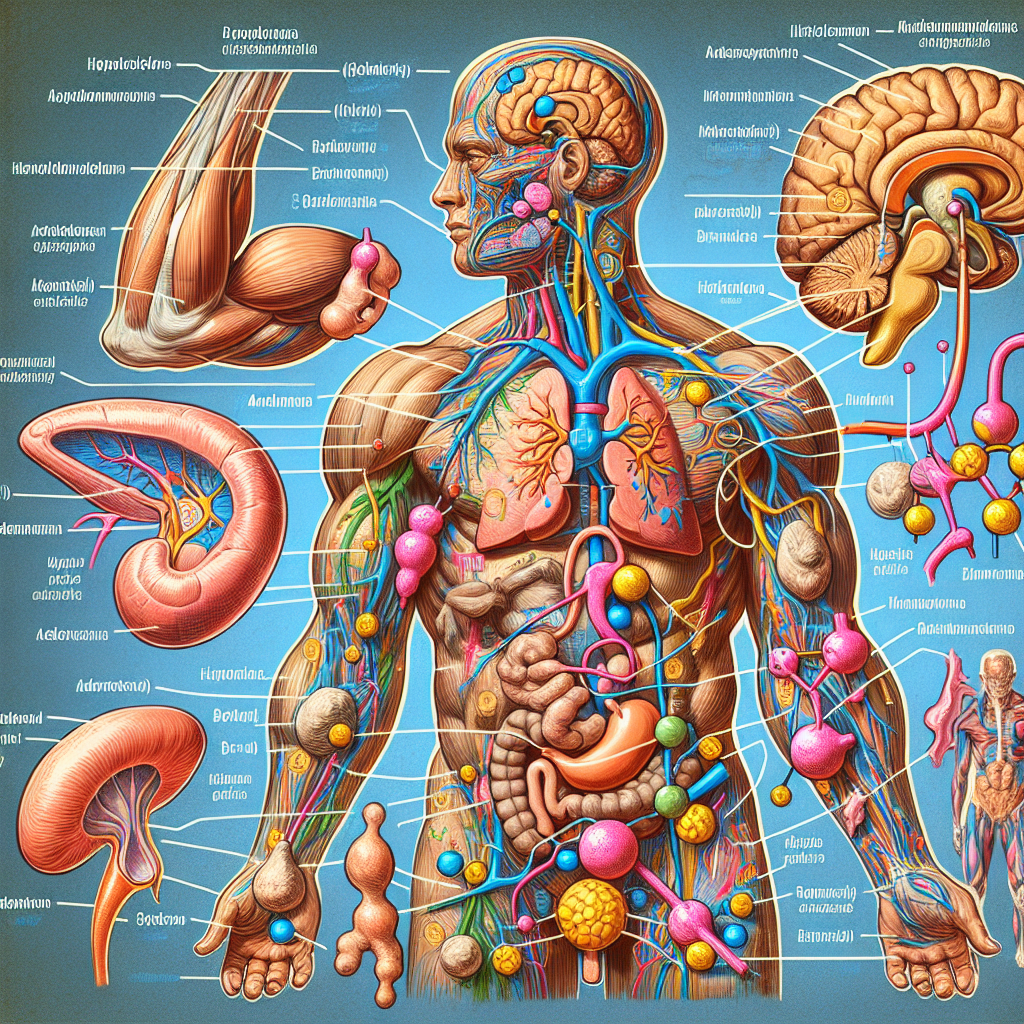-
Table of Contents
Analyzing Nandrolone’s Effects on the Endocrine System
Nandrolone, also known as 19-nortestosterone, is a synthetic anabolic-androgenic steroid (AAS) that has been used for decades in the world of sports and bodybuilding. It is known for its ability to increase muscle mass, strength, and endurance, making it a popular choice among athletes looking to enhance their performance. However, like all AAS, nandrolone has potential side effects, particularly on the endocrine system. In this article, we will delve into the pharmacokinetics and pharmacodynamics of nandrolone and analyze its effects on the endocrine system.
Pharmacokinetics of Nandrolone
Nandrolone is available in various forms, including injectable solutions, oral tablets, and transdermal patches. The most commonly used form is nandrolone decanoate, which has a longer half-life compared to other forms, making it more convenient for athletes who want to avoid frequent injections.
After administration, nandrolone is rapidly absorbed into the bloodstream and reaches peak plasma levels within 2-3 days. It is then metabolized in the liver and excreted in the urine. The half-life of nandrolone decanoate is approximately 6-8 days, while the half-life of nandrolone phenylpropionate is shorter at 4-5 days (Kicman, 2008).
One of the unique characteristics of nandrolone is its ability to be converted into dihydrotestosterone (DHT) via the enzyme 5-alpha reductase. This conversion is responsible for some of the androgenic effects of nandrolone, such as increased facial and body hair growth. However, it also has a high affinity for the androgen receptor, making it a potent anabolic agent (Kicman, 2008).
Pharmacodynamics of Nandrolone
Nandrolone exerts its effects on the body through various mechanisms. It increases protein synthesis and nitrogen retention, leading to an increase in muscle mass and strength. It also has anti-catabolic properties, meaning it can prevent the breakdown of muscle tissue (Kicman, 2008).
Moreover, nandrolone has a direct effect on the endocrine system. It can suppress the production of endogenous testosterone, luteinizing hormone (LH), and follicle-stimulating hormone (FSH) through negative feedback on the hypothalamic-pituitary-gonadal (HPG) axis. This can lead to a decrease in sperm production and testicular atrophy in men (Kicman, 2008).
In women, nandrolone can cause virilization, which is the development of male characteristics such as deepening of the voice, increased body hair, and clitoral enlargement. It can also disrupt the menstrual cycle and cause infertility (Kicman, 2008).
Effects on the Endocrine System
The endocrine system is a complex network of glands and hormones that regulate various bodily functions, including growth, metabolism, and reproduction. Nandrolone’s effects on the endocrine system can have both short-term and long-term consequences.
Short-Term Effects
One of the most immediate effects of nandrolone on the endocrine system is the suppression of testosterone production. This can lead to a decrease in libido, erectile dysfunction, and mood changes. In some cases, it can also cause gynecomastia, which is the enlargement of breast tissue in men (Kicman, 2008).
Nandrolone can also affect the production of other hormones, such as cortisol and insulin. This can lead to an increase in blood sugar levels and a decrease in insulin sensitivity, which can increase the risk of developing type 2 diabetes (Kicman, 2008).
Long-Term Effects
Long-term use of nandrolone can have more severe effects on the endocrine system. It can lead to hypogonadism, which is a condition where the body does not produce enough testosterone. This can result in infertility, decreased bone density, and an increased risk of cardiovascular disease (Kicman, 2008).
Nandrolone can also cause changes in the levels of other hormones, such as growth hormone and insulin-like growth factor 1 (IGF-1). These hormones play a crucial role in muscle growth and repair, and any disruption in their levels can have a significant impact on an athlete’s performance (Kicman, 2008).
Real-World Examples
The use of nandrolone in sports has been well-documented, with numerous athletes testing positive for the substance. One notable example is the case of Canadian sprinter Ben Johnson, who was stripped of his gold medal at the 1988 Olympics after testing positive for nandrolone (Kicman, 2008).
In recent years, there have also been several high-profile cases of athletes testing positive for nandrolone, including baseball player Alex Rodriguez and MMA fighter Anderson Silva. These cases highlight the prevalence of nandrolone use in sports and the potential consequences it can have on an athlete’s career and reputation.
Expert Opinion
According to Dr. Charles E. Yesalis, a leading expert in sports pharmacology, the use of nandrolone and other AAS in sports is a serious issue that needs to be addressed. He states, “The use of nandrolone and other AAS in sports is not only cheating, but it also poses significant health risks to athletes. It is crucial for governing bodies to implement strict testing and penalties to deter the use of these substances” (Yesalis, 2000).
Conclusion
Nandrolone is a powerful AAS that has been used for decades in the world of sports and bodybuilding. While it can provide significant benefits in terms of muscle mass and strength, it also has potential side effects on the endocrine system. These effects can have both short-term and long-term consequences, including hormonal imbalances, infertility, and an increased risk of cardiovascular disease. It is essential for athletes to understand the risks associated with nandrolone use and for governing bodies to implement strict testing and penalties to deter its use in sports.
References
Kicman, A. T. (2008). Pharmacology of anabolic steroids. British Journal of Pharmacology, 154(3), 502-521.
Yesalis, C. E. (2000). Anabolic steroids in sport and exercise. Champaign, IL: Human Kinetics.
<img src="https://images.unsplash.com/photo-1581093450826-1c5a5c8



